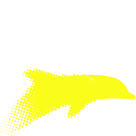Two major format types are used by Ifremer and its partners to provide access to the data they bank:
"Text" formats
These files can be directly read using conventional office software (word processing software, spreadsheets...). These files are generally organised into rows and columns ("spreadsheet" format), with each row representing a basic observation, one column representing all the successively observed values for a given parameter (e.g. CSV format). The main formats used for data distribution are therefore MedAtlas and ODV.
"Digital" formats
These are files in which the information is not coded by numbers and letters but directly by digital values, in computer format. Digital formats are more compact and can be used to store greater quantities of information for an equivalent volume. The following formats are therefore employed: NetCDF format (Common Data Format: Unidata) for observation data and analysis and modelling results, the ShapeFile format for cartography, the TIFF format (GeoTiff) for aerial or satellite images, and the MP4 format for videos.
The NetCDF format is very commonly used by the scientific community studying the ocean and atmosphere. It can be adapted to each discipline and application using models, often jointly defined through major international programmes. To make these models originating from different disciplines compatible and use the same tools to read the data, CF (Climate & Forecast) conventions are very often implemented to define them.
At Ifremer, the following formats are the most commonly used:
- Operational oceanography (OceanSites and Argo): NetCDF
- SeaDataNet: Ocean Data View (ODV), NetCDF, MedAtlas
- Geoscience (bathymetry, magnetism and gravimetrydata): mainly NetCDF (NETwork Common Data Form), MGD (Marine Geophysical Data Exchange Format), SEG (Society of Exploration Geophysicists)
- Geographical information: Shapefile, Geotiff
